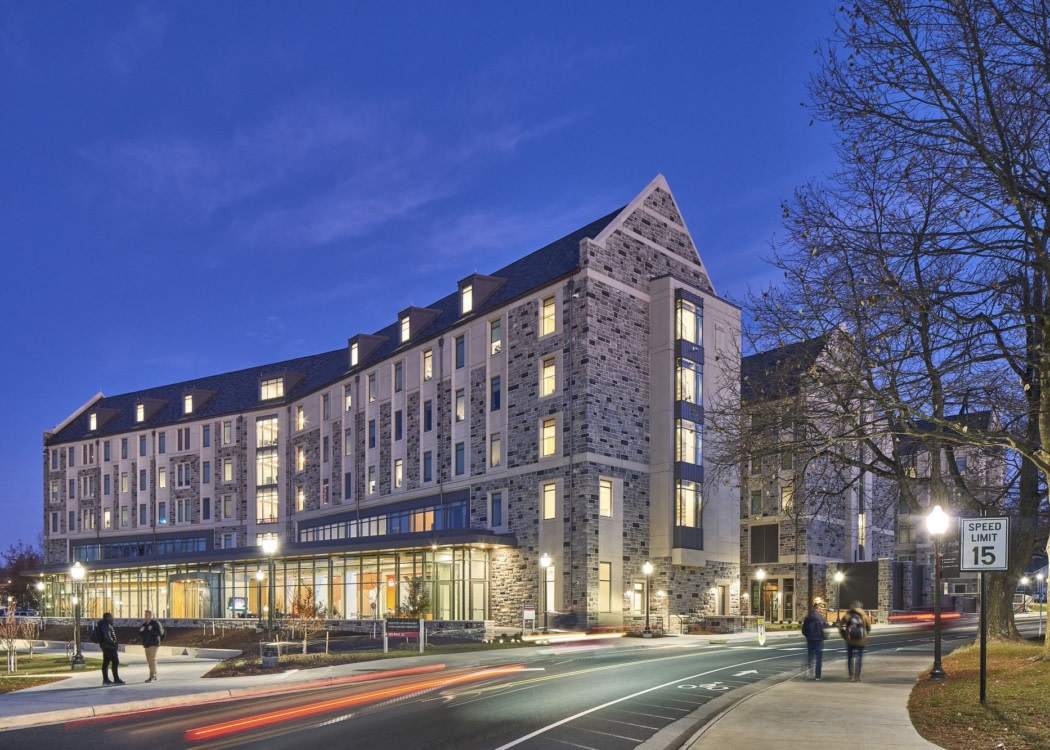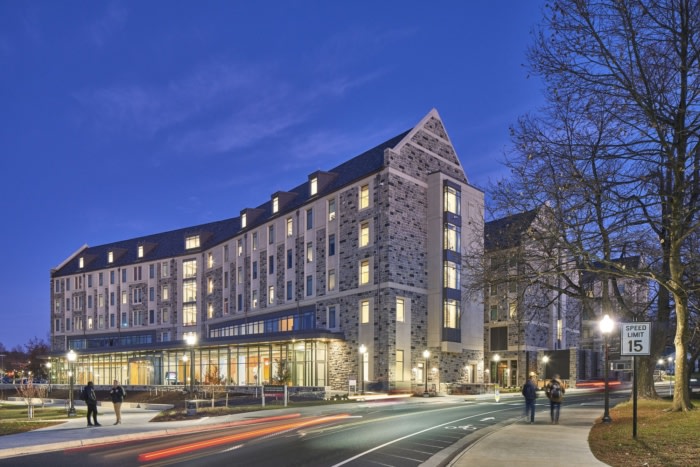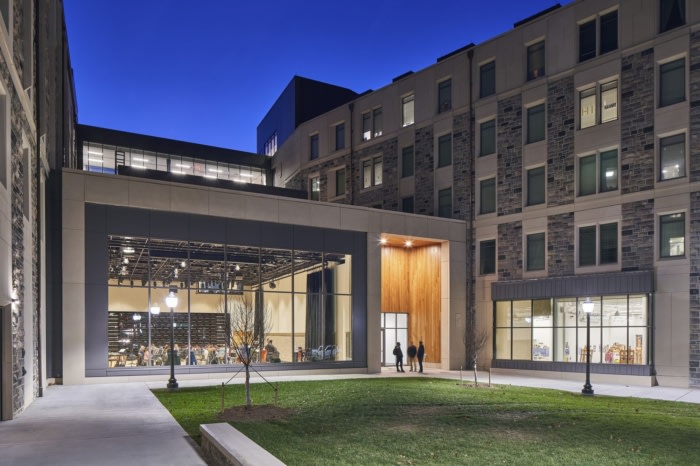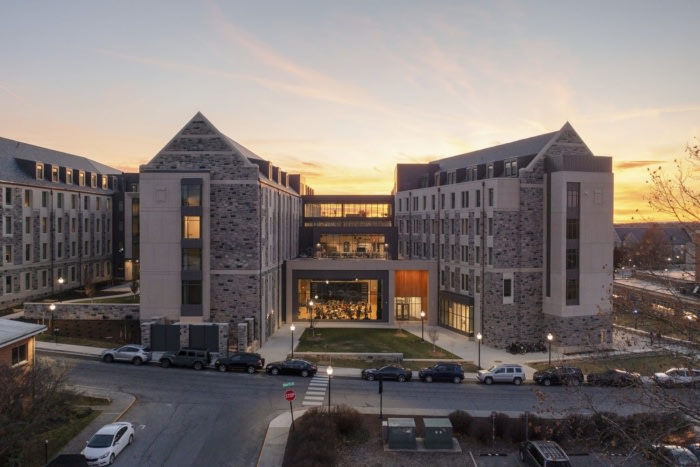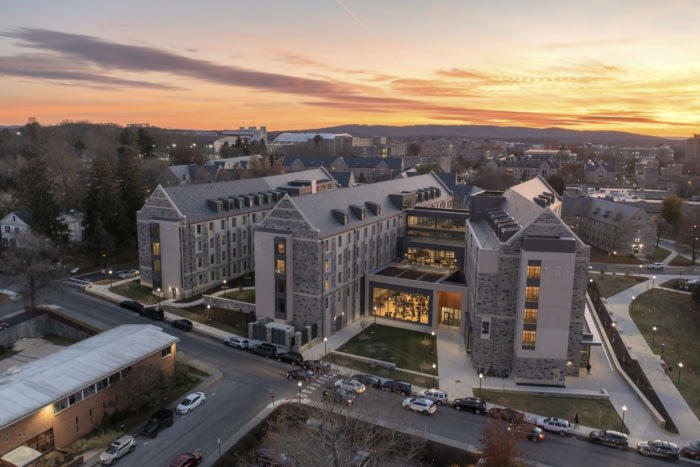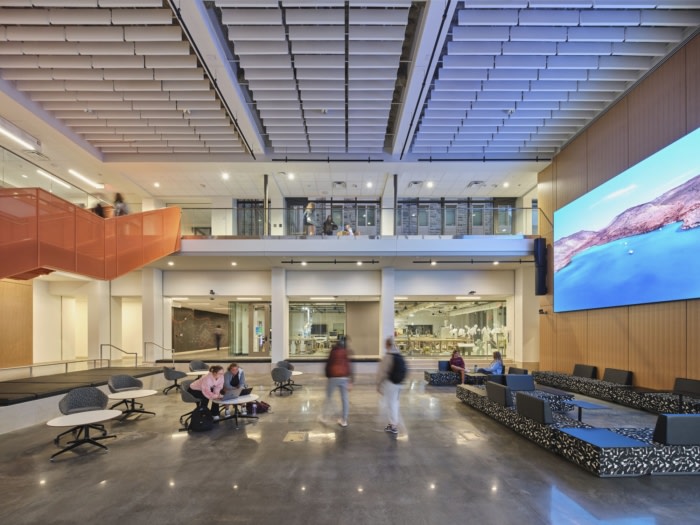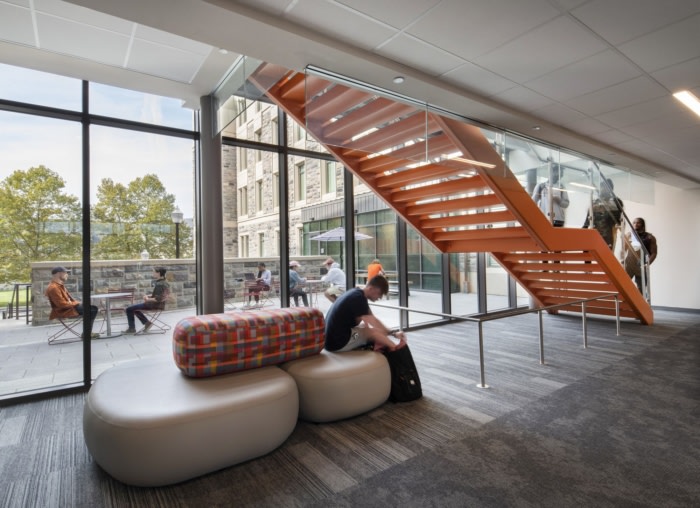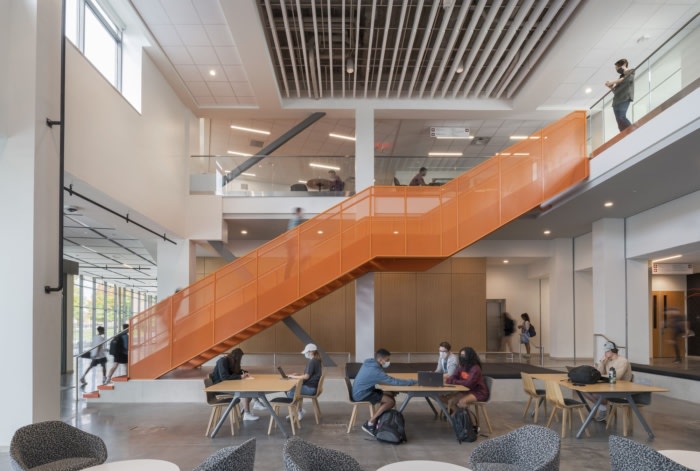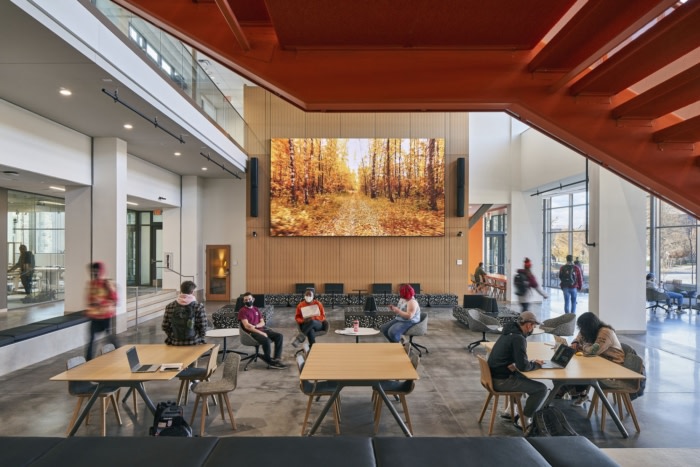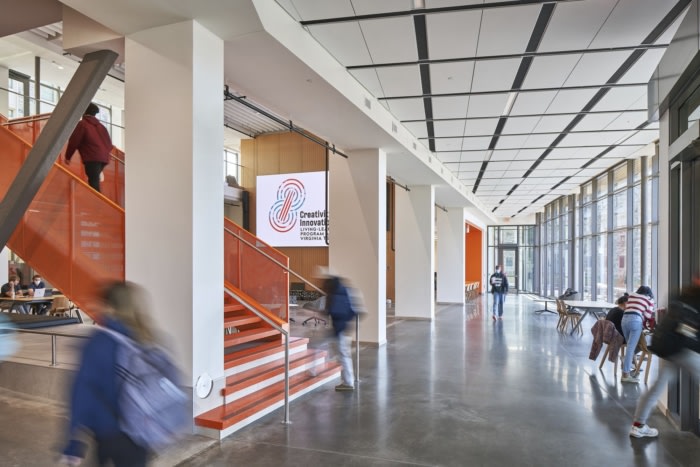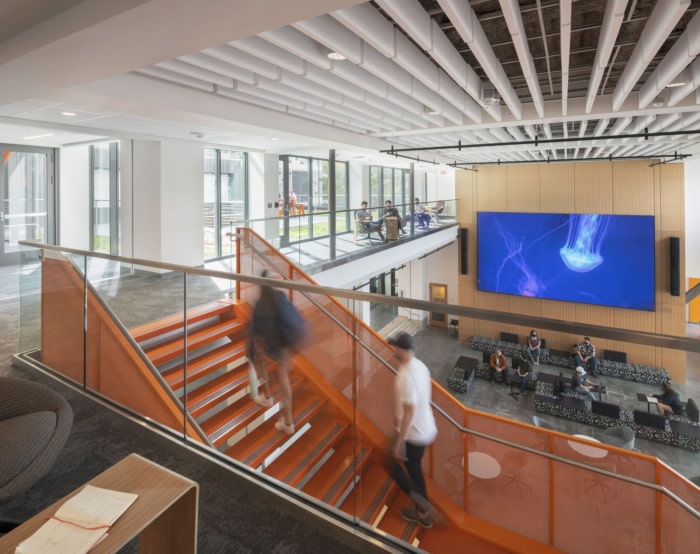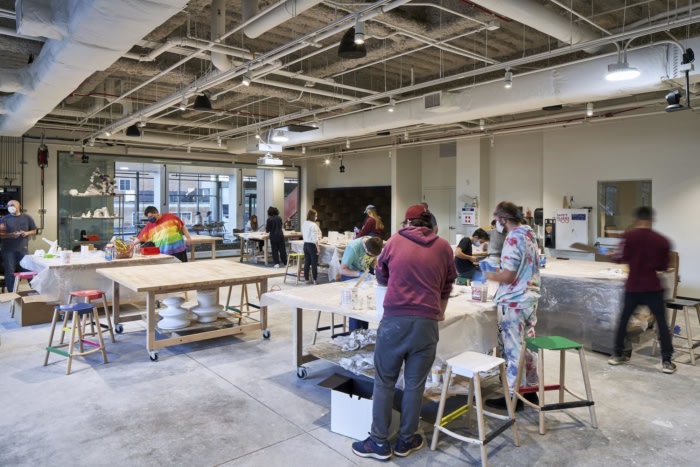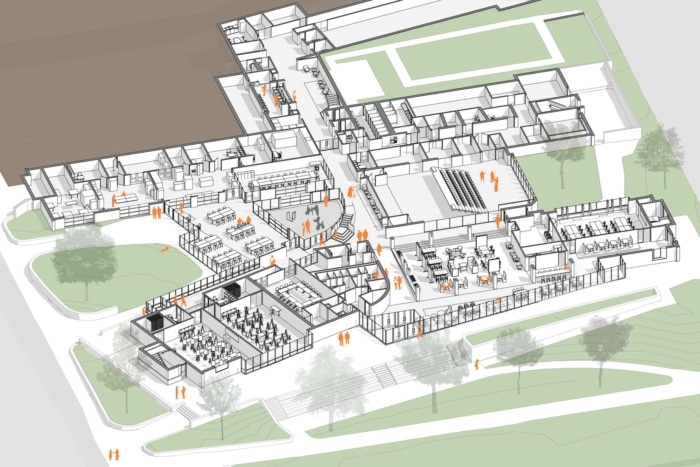Virginia Tech – Creativity and Innovation District Living/Learning Community
Hanbury designed the Creativity and Innovation District Living/Learning Community for Virginia Tech in Blacksburg, Virginia.
Serving as a vibrant hub for strategic and creative collisions, the Virginia Tech Creativity and Innovation District is a ‘playground for the innovators, inventors, and makers who will build the world of tomorrow.’ At its core lies a dynamic living/learning community spanning 30,000 square feet of interdisciplinary space, where students, faculty, and community entrepreneurs converge to collaborate and redefine boundaries.
By igniting innovation and facilitating the journey from concept to commercialization, the project offers a blueprint that empowers students to extend their impact well beyond graduation and into their communities. The inclusion of “bridge spaces” becomes a vital component, fostering close collaboration among companies, students, faculty, and scholars. These spaces serve as incubators, nurturing ideas and guiding their evolution into viable businesses.
The upper floors provide an immersive residential experience for 600 curious students, creating a holistic environment for exploration and personal growth. Each design element is meticulously crafted to enhance engagement and fuel innovation, resulting in a transformative, innovative, and entrepreneurial student experience.
NEW LANGUAGE, INSPIRED CONTEXT
The Virginia Tech CID showcases innovation through its intentional design that fosters cross-disciplinary engagement and increases the likelihood of creativity and innovation. The design is intentional in creating physical and visual connections, promoting collaboration in every corner of the community, and spatial relationships to strategically encourage serendipitous encounters.The project introduces a new language of transparency, transforming the traditional residential setting at Virginia Tech. A central and transparent spine and ground floor infuse the community with natural light, while showcasing creativity and innovation to the broader campus community. This design element not only enhances the daily life of the collegiate community but also provides new vistas and memorable moments that enrich the overall campus experience.
The architectural forms, characterized by gabled stone structures connected by glass connectors, establish visual connections with the campus and surrounding community. Each form serves as a home for students, paying homage to traditional campus architecture while inspiring new quadrangles and outdoor learning spaces that complement the campus’s existing design language.
CREATIVITY & INNOVATION ON DISPLAY
To capture the spirit of unity found on the playing field, the project seeks to translate that energy into the engaged residential experience. Community connections play a vital role, with the orange stair serving as a physical and symbolic link that transcends levels and boundaries within the building. It weaves its way through the structure, curating the community’s story and connecting a hierarchy of engagement opportunities, from personal reflection and study to collaborative creative and innovation explorations. The use of the color orange represents energy, excitement, and its connection to the university brand, ensuring high visibility and a strong sense of identity.
Design: Hanbury
Photography: Keith Isaacs

